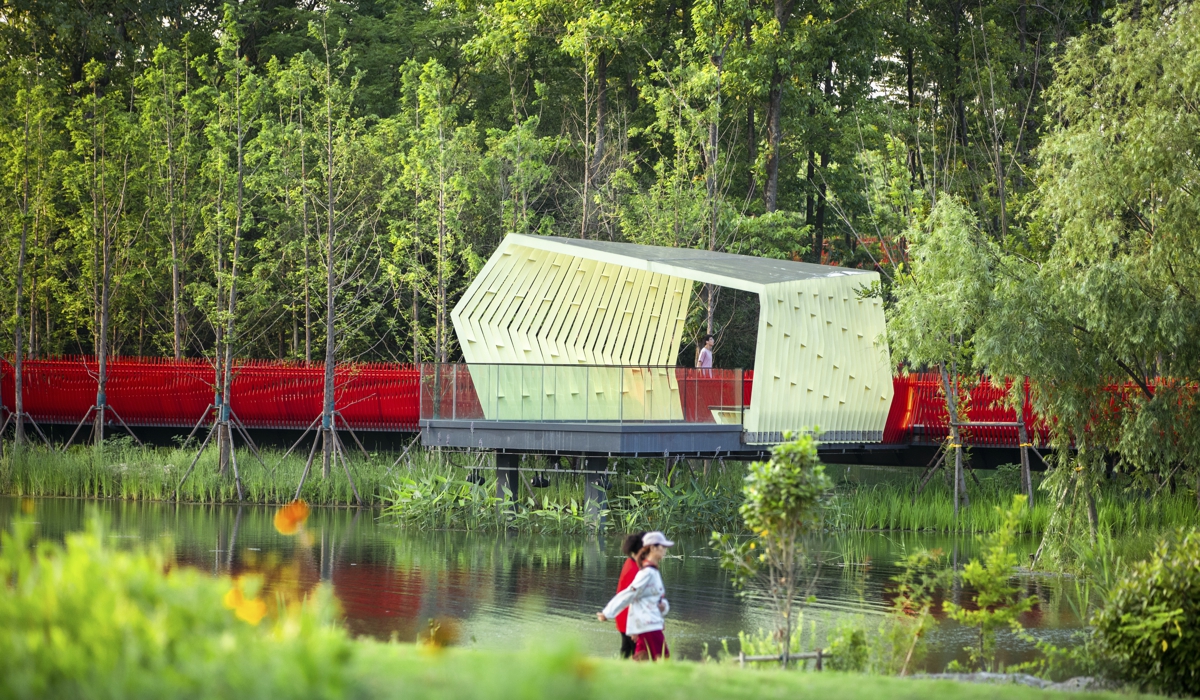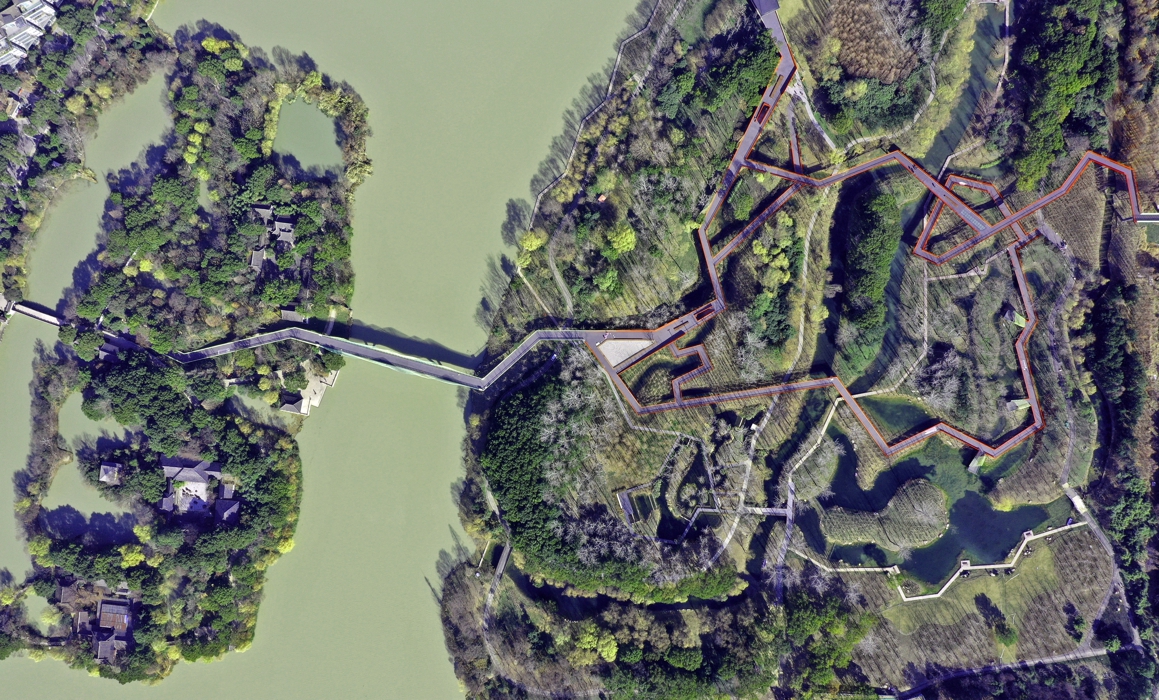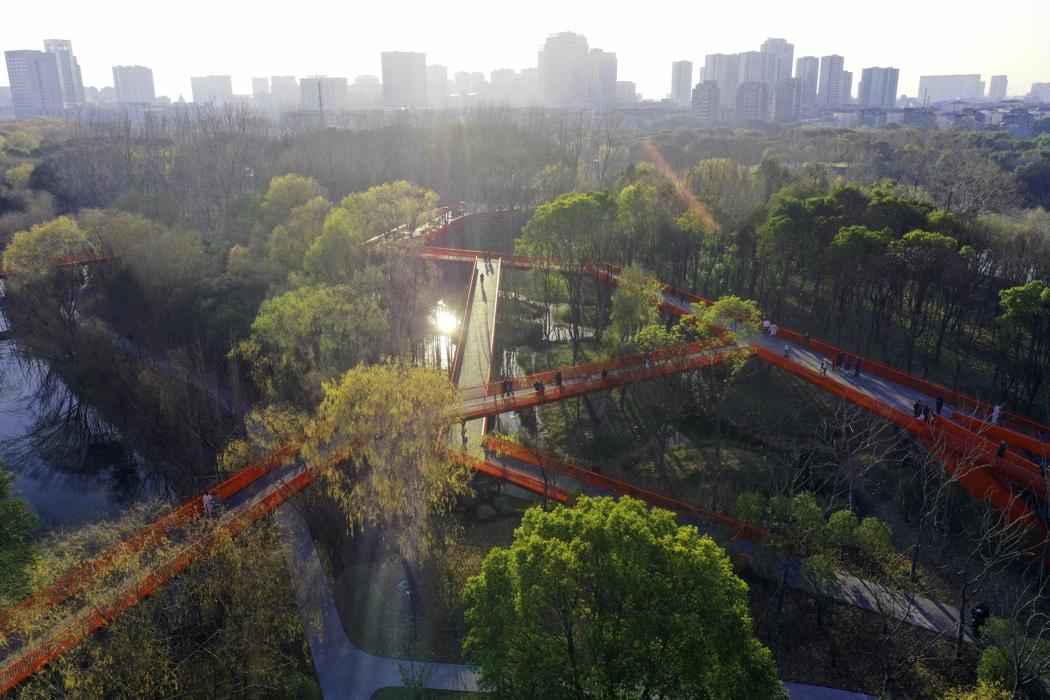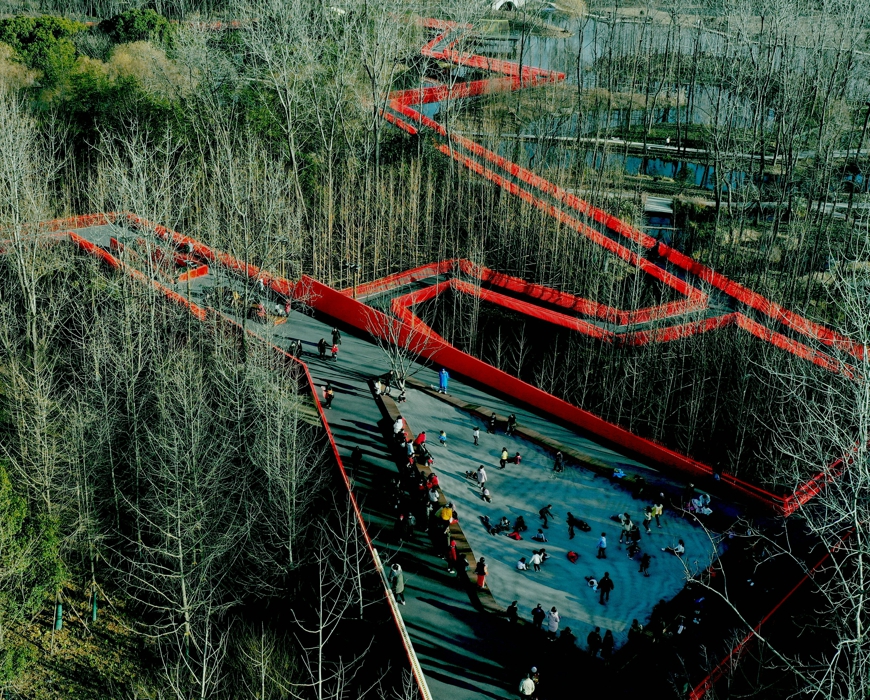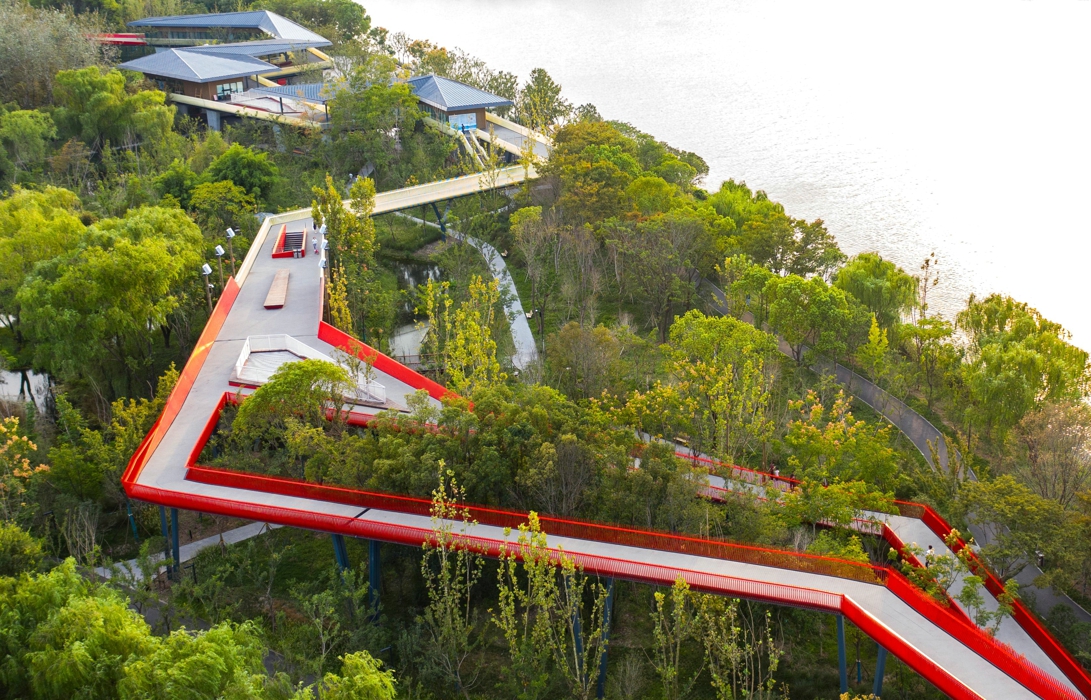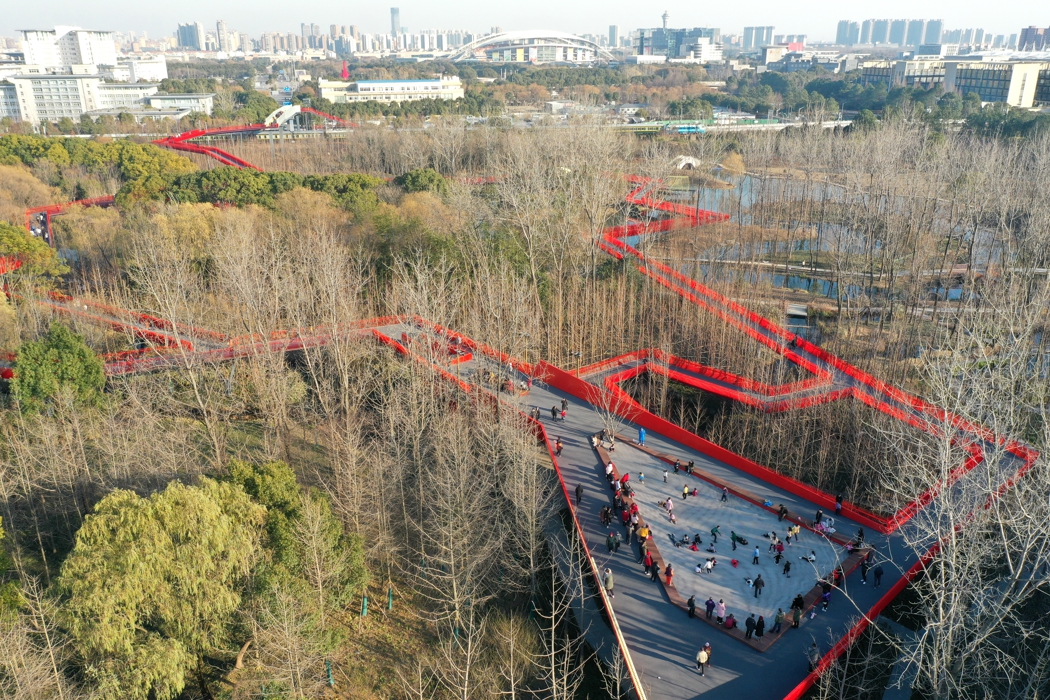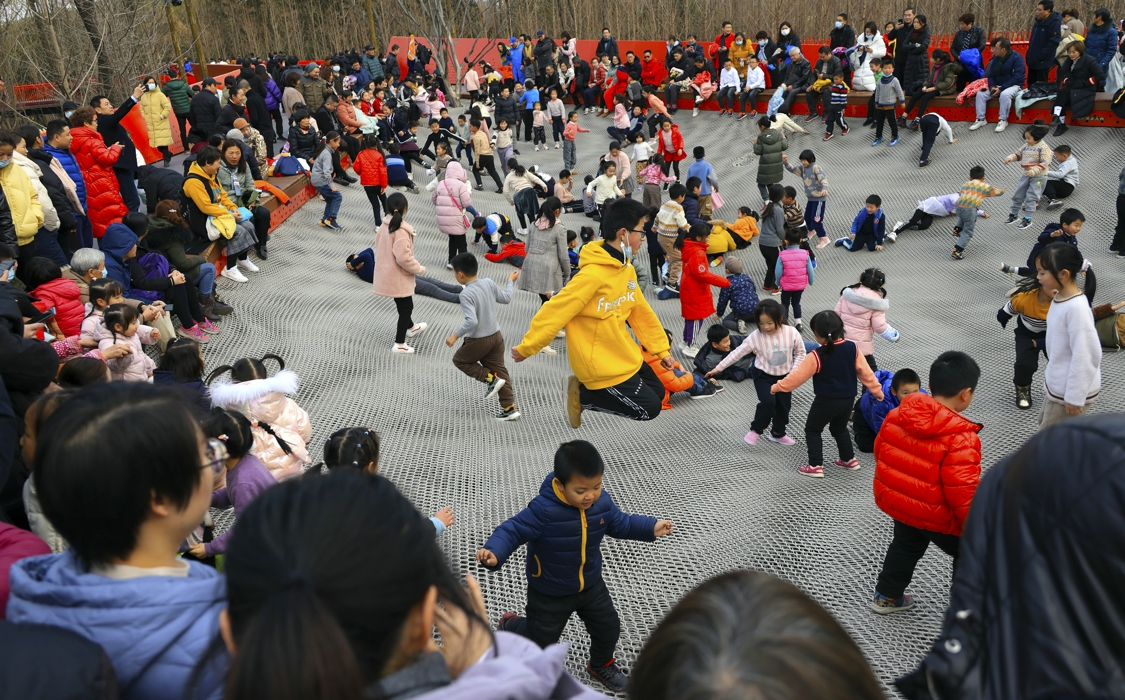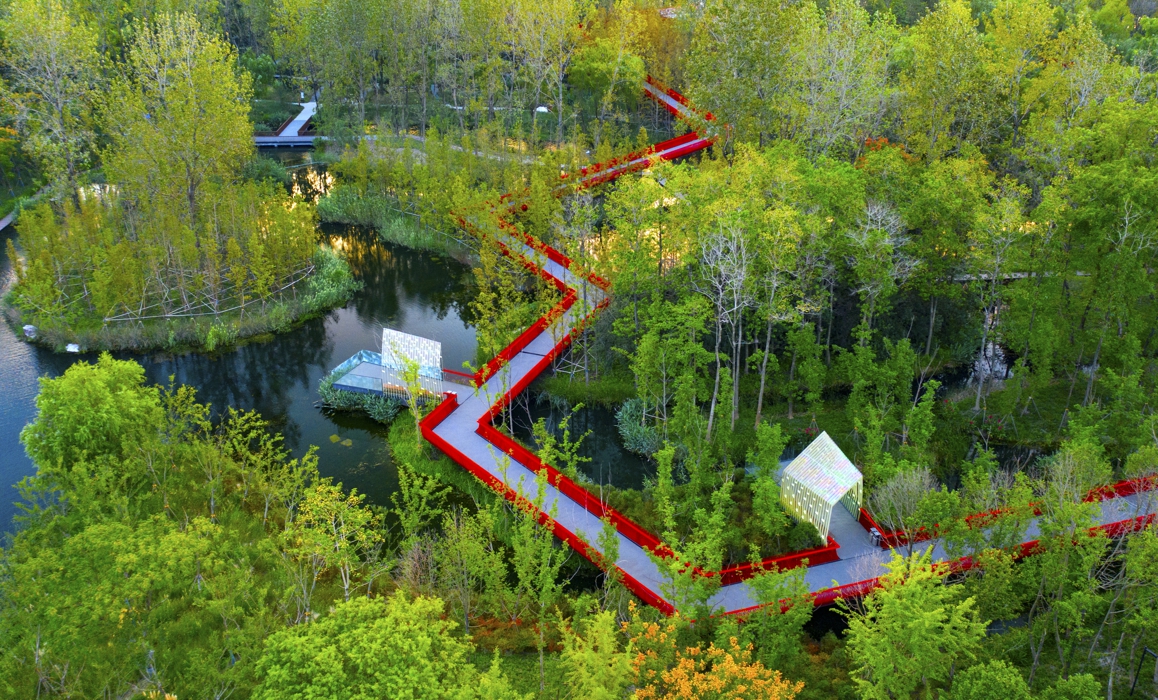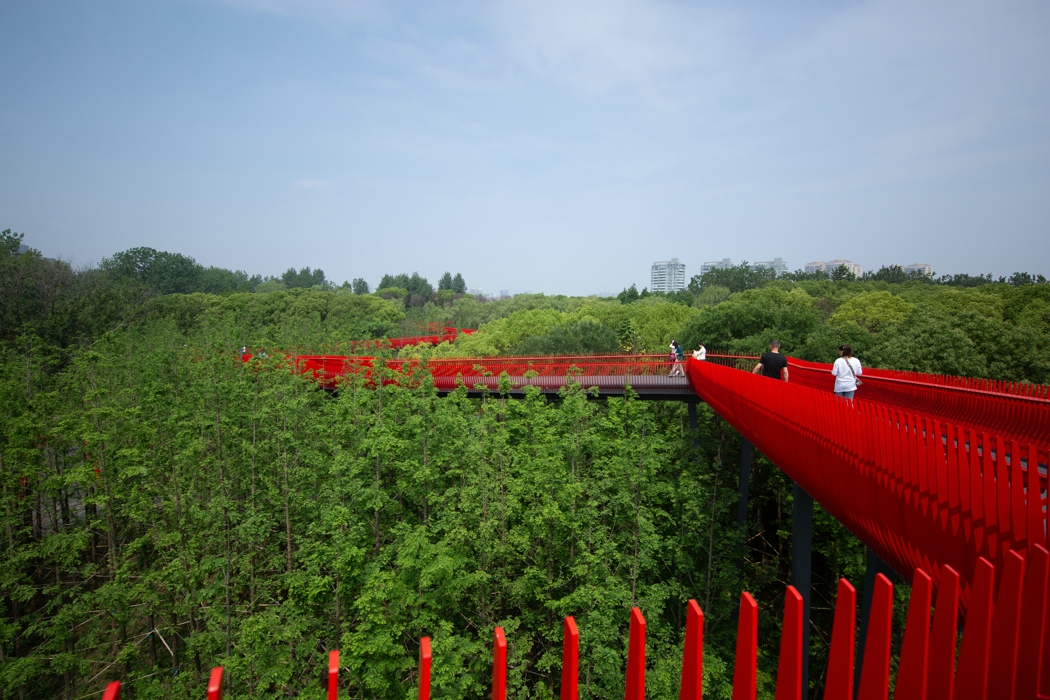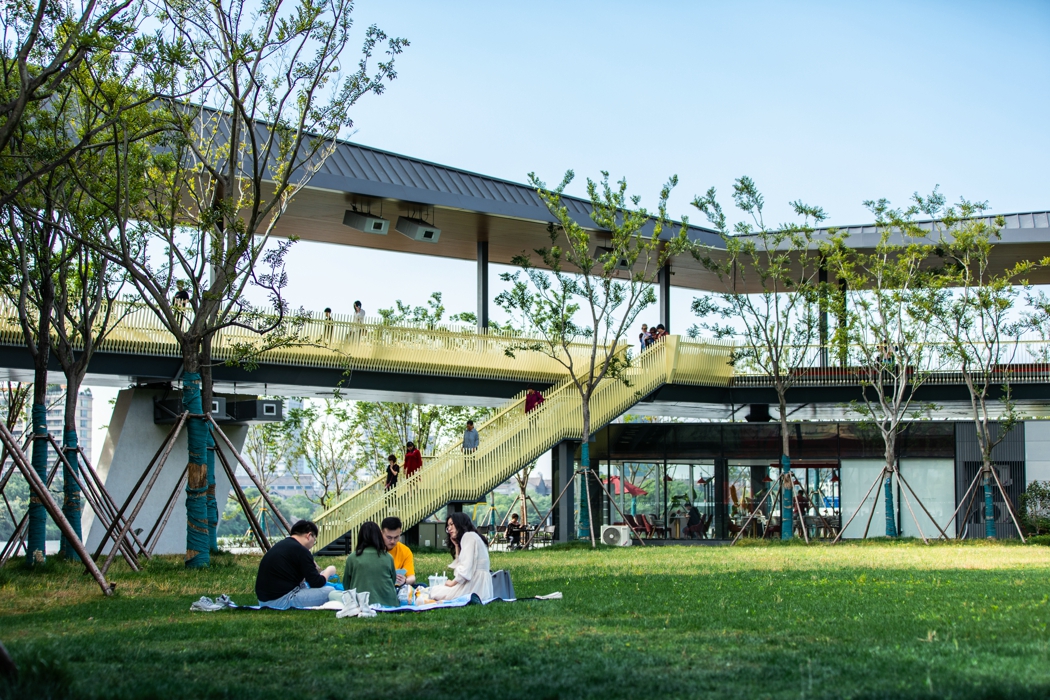Jiaxing Xinanhu Park Skywalk
Project Information
- Project Location:
- China Jiaxing, Zhejiang
- Project Scale:
- 2363m
- Design Time:
- May 2020
- Build Time:
- July 2021
Project Profile
Jiaxing is located along the eastern coast of China, positioned between the major cities of Hangzhou, Suzhou, and Shanghai. With a population of over 1.5 million, the city center hosts a lush green space known as the Southwest Lake Park. Although the nearby 5 km² South Lake Scenic Area receives over 10 million visitors annually, Southwest Lake Park remained isolated in function, separated by surrounding residential communities and the city’s bustling tourist zones.
The aerial walkway introduces a floating public space above the existing, well-preserved wetlands and forest canopy. This design not only protects an important urban natural island from being overwhelmed by tourists but also enhances the site itself, serving the dual purpose of meeting local recreational needs and accommodating growing regional tourism.
The designers created a “Sky Net” that weaves together cafes, shops, playgrounds, pavilions, and other amenities into a true public space hovering above the treetops. Stretching approximately 2.4 km, the Sky Net spans eastward across the railway to connect to the tourist area, and westward across water to link with the local community. Remarkably, not a single native tree was removed during construction, despite the walkway traversing dense forest canopy. Suspended 4–5 meters above the ground, the walkway is 3 meters wide on average. Trees grow up through the structure on both sides, creating an immersive, enveloping experience. The steel structure is painted bright red, standing in vivid contrast to the expansive green surroundings.
Children’s play areas, cafés, bookstores, pavilions, and resting spots are integrated throughout the aerial network. One playground features a trampoline-style net suspended in the canopy, complete with nearby seating for parents, encouraging close family interaction. At certain points, reinforced glass panels in the floor allow visitors to see 5 meters down to the ground below. An app-based guide system enhances the experience by offering insights into the natural life among the treetops and views of the city skyline—offering residents, otherwise confined to flat and narrow urban spaces, a fresh new perspective.
Beneath the canopy and the walkway network, redesigned interventions include directing water into constructed wetlands to demonstrate urban nature’s potential for water filtration. Staircases link the aerial path with on-the-ground trail systems, offering visitors an immersive journey through tangled forests and wetland ecologies.
The “Sky Net” has proven to be a major success. In the first month after opening in January 2021, daily visitor numbers soared to 100,000. Within its first year, what was once an isolated and neglected green space became one of the city’s most visited destinations.
